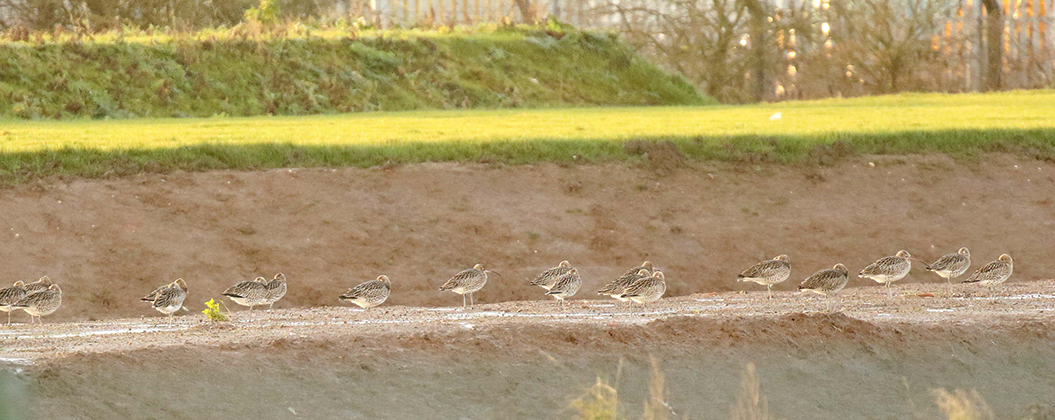Above: Curlews on ABP’s mitigation site in Grimsby - Copyright Richard Baines
Curlews, a species of wading bird, which has become one of the UK’s most important conservation priorities, have been making good use of mitigation land created by Associated British Ports (ABP) in Grimsby.
The Curlew breeding population has been declining in the UK for many years. Globally their breeding ground productivity has also been in decline, meaning their IUCN Red List status, a critical indicator of the health of the world’s biodiversity, is ‘near threatened’. The decline is thought to be a result of breeding habitat loss, predation, climate change, and a combination of these issues.
The five hectare site was completed last summer. It was required as part of the planning permission for the Grimsby Automotive Terminal, which is on the site of the former Huntsman Tioxide factory works.
Ecologists have reported excellent numbers of wading birds using the site. On a recent count, 225 Curlews, 153 Redshanks and 13 Dunlins were recorded. The area provides many benefits to waders, which feed on invertebrates within the mud and roost during high water periods, reducing the need to fly longer distances, saving valuable energy.
Ecologist, Richard Baines, from Wold Ecology, who has been monitoring the site said: “ABP’s investment in this expertly designed scheme, has certainly paid off, with an impressive result of wading birds using the area to feed and roost within.
Habitat creation of this kind does yield quick results for waders, and in this instance was aided by the historical use of the area by wading birds.”
ABP Humber Director, Simon Bird, said: “ABP is committed to ensure that its port related activities and developments are carefully considered. It is pleasing to hear that the mitigation area is working as we expected, attracting many species of wading birds that use the Humber Estuary. We look forward to seeing the area go from strength to strength.”
The welcome news of Grimsby’s mitigation site comes as work on a joint venture by the Environment Agency and Associated British Ports, is set to begin this spring on the north bank of the Humber. The ‘Outstrays to Skeffling Managed Realignment Scheme’ will improve flood protection, create 175 hectares of intertidal habitat, and 75 hectares of wet grassland habitat.


